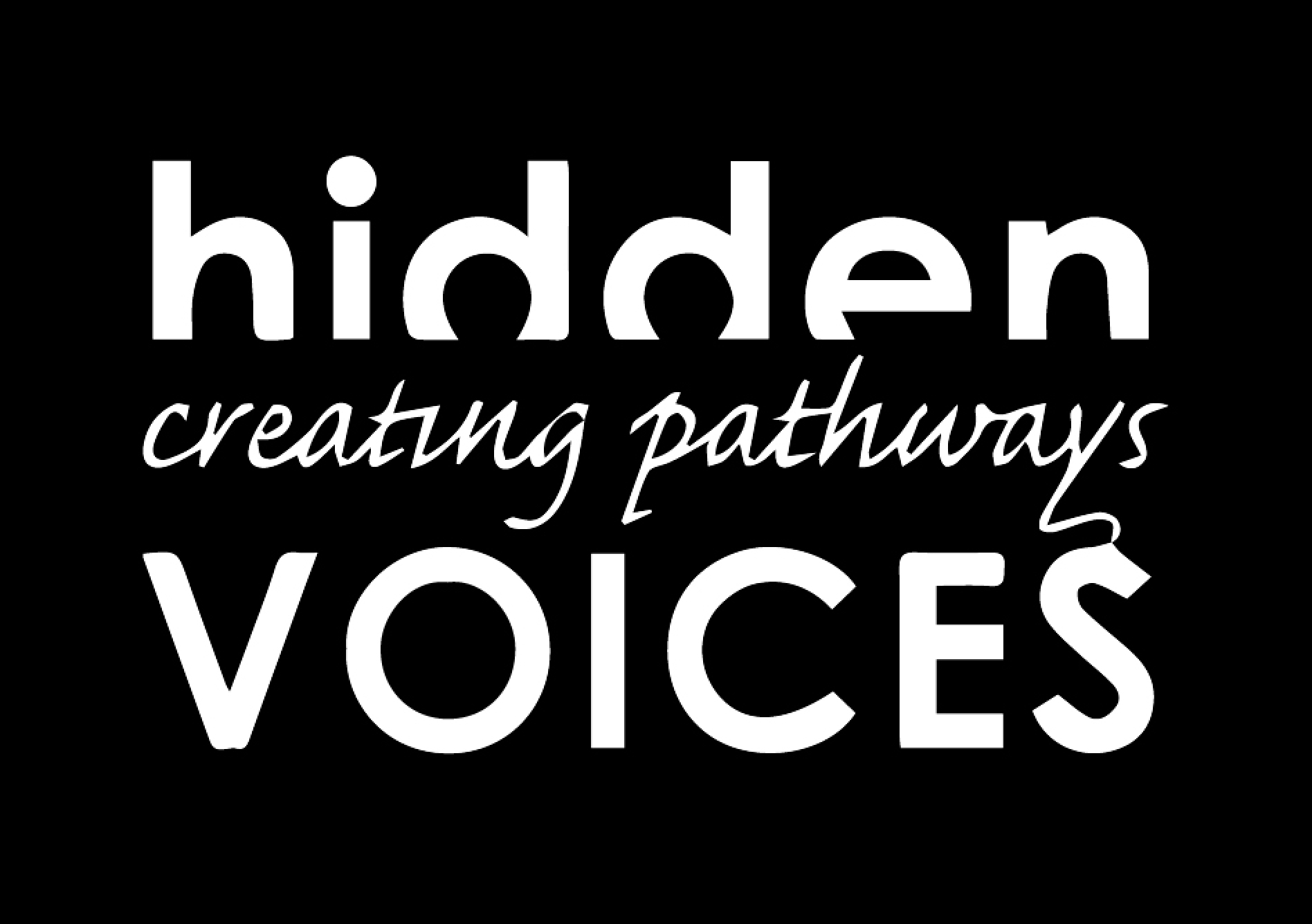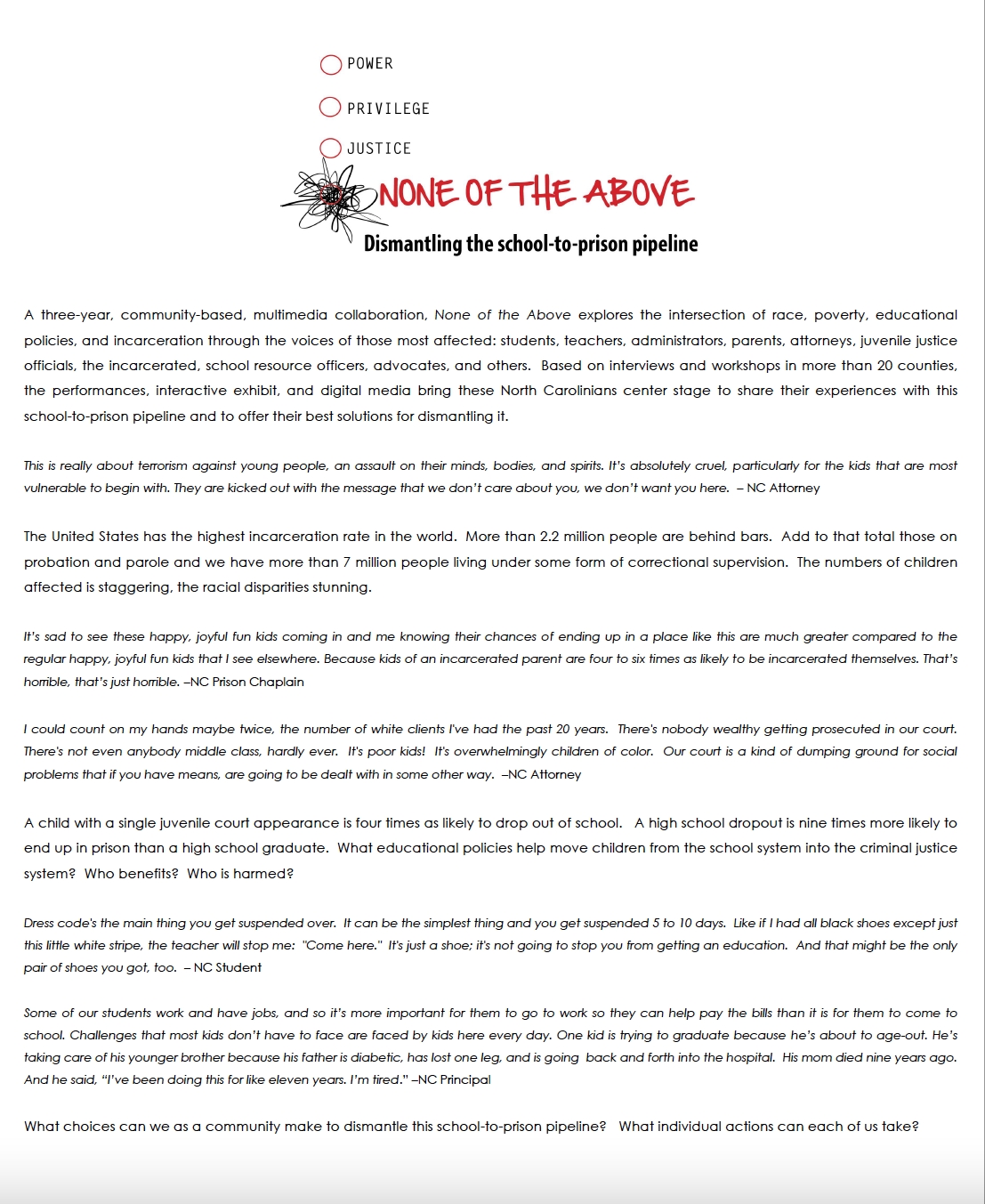NONE OF THE ABOVE
EXHIBIT
From poverty to racial bias to educational policies such as zero-tolerance discipline and high stakes testing, the factors contributing to the school-to-prison-pipeline are interconnected, though current public discourse contains little from the perspective of those most affected.
This traveling, interactive “classroom” includes humorous portraits from teachers and students; wall maps and Viewmaster images expressing critical data; student desks investigating the diverse issues contributing to the pipeline and offering advice; a teacher’s desk sharing viewpoints from public school; classroom projects offering powerful perspectives; and videos of community members answering, “Have you ever heard of the school-to-prison pipeline?”
Participating in the exhibit offers a chance for audiences to find common ground and a path forward. The exhibit closes with a white board inviting viewers to Do One Thing.
VIDEO
How much does the average person know about the school to prison pipeline? We took to the streets to find out. Many have no idea this school to prison pipeline exists.
EXHIBIT PANELS & FACT SHEET
Installations


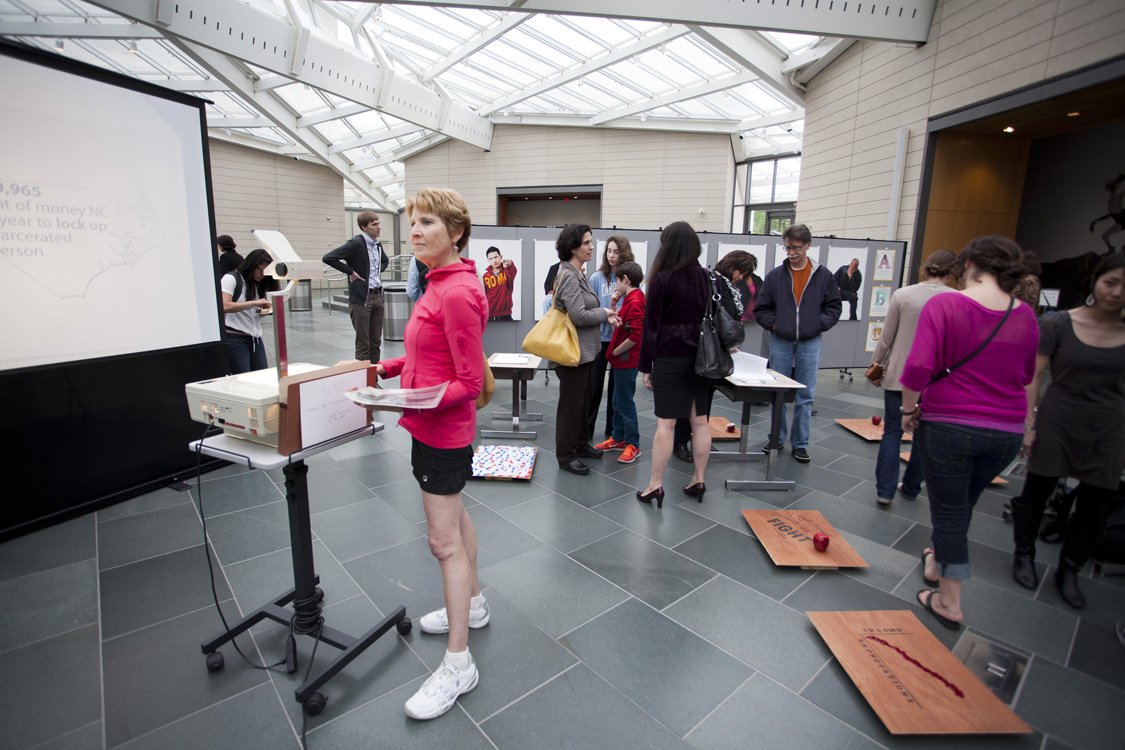









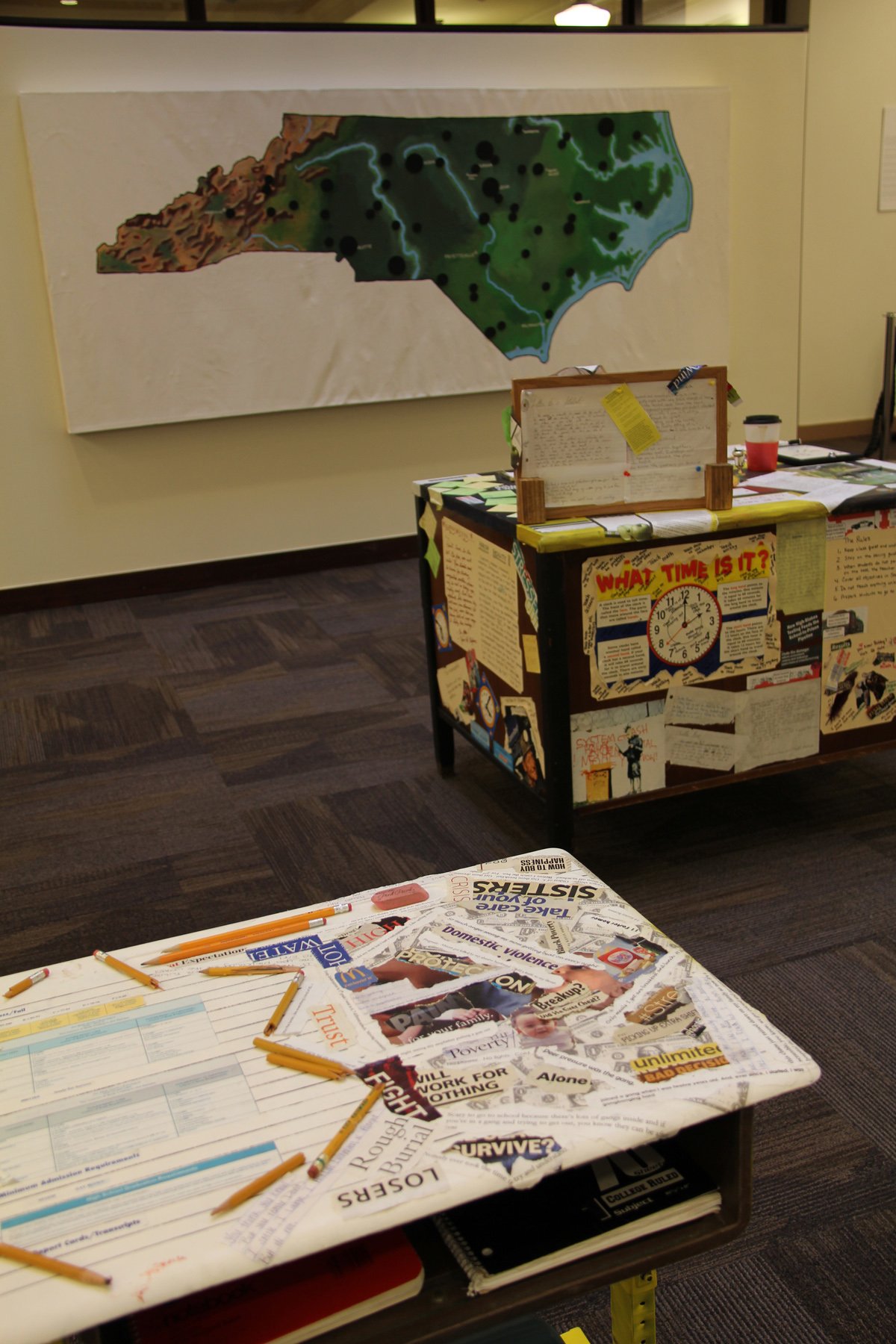








Portraits
We asked teachers and students around the state to imitate the worst of each other. They were delighted to oblige. We then asked them to embody their true self. What did we find? An abundance of good humor and a lot of common ground.
Portraits by Jessie-Gladin Kramer
TEACHERS
STUDENTS
MAPS
How does the school-to-prison pipeline affect students in different areas of the state? Where do we see the greatest disparities? The maps in this exhibit attempt to answer these questions and to make sense of the huge amount of data about school performance and suspensions.
















DESKS
Each desk offers an intimate look at one aspect of the pipeline. From testing to police in schools to racial disparities and the profound stresses in these students’ lives, the desks invite you to pull up a chair and sit awhile. You will find both numbers and stories tucked away in the most obvious and the most unlikely places.
One desk allows you to listen to the students’ voices, another to read their advice to you. These students took a leap of faith in sharing their lives. Feel free to explore. And make sure to uncover the solutions.
A MILE WIDE (& an inch deep)
Student & teacher perspectives on high-stakes testing.
TEACHER DESK
Teachers have a lot to say, as we learned first-hand from our workshops with them. The vast majority are heroes, educating children as best they can despite increasing demands on their time and decreasing funding. These teachers do their best through the sheer dint of will and commitment. (Not to say they wouldn’t all like to make a living wage.)
The teacher desk is filled with tweets, letters to students, collages and file folders expressing their struggles and successes, resignation letters, captured notes, letters to legislators, and statistics about funding and finances.
Spend some time with the desk. Time is something teachers don’t have.







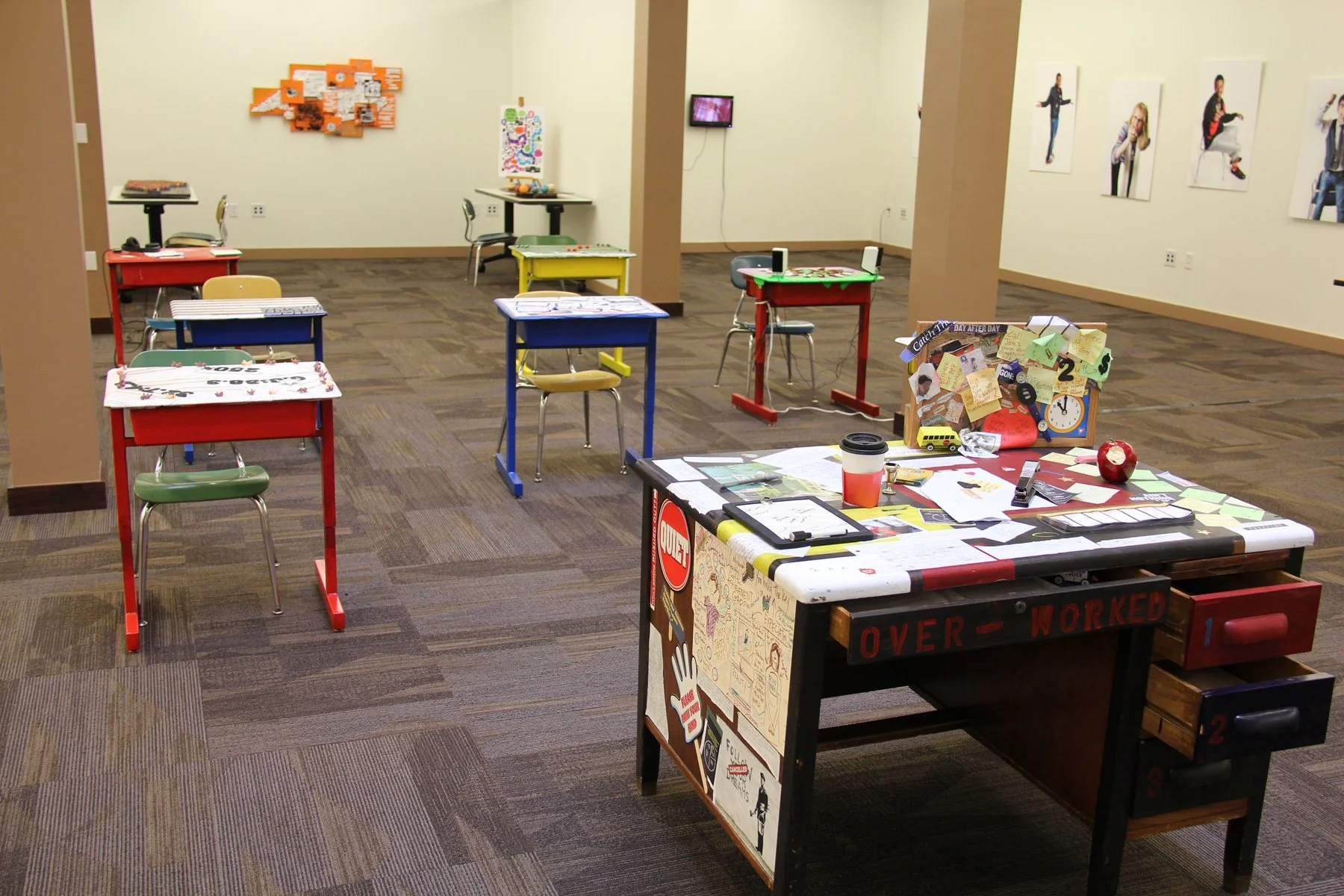
INSIDE THE DESK
CLASSROOM PROJECTS
Three iconic classroom projects offer fresh perspective on North Carolina and the school-to-prison pipeline. The solar system gives the biggest perspective possible; the crayon map shines a colorful light on a terrible outcome; and the board game invites us into a closer look at the realities of winning when the odds are stacked against you.
WHITEBOARD: DO ONE THING
I WILL DO ONE THING: Choose a solution suggested by these stakeholders or come up with your own, but either way, leave your thoughts.
Listen closely. Take action. Make change happen.
